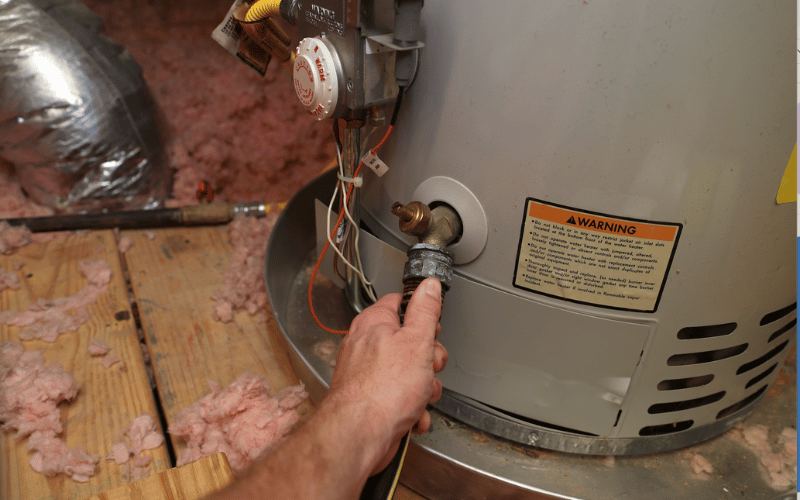Effective Strategies for Caring for Your Home's Hot Water System
Effective Strategies for Caring for Your Home's Hot Water System
Blog Article
Nearly everybody is bound to have their own individual conception with regards to How to Maintain a Hot Water Heater in a Few Simple Steps.

Hot water is necessary for everyday convenience, whether it's for a revitalizing shower or washing recipes. To ensure your hot water system runs successfully and lasts much longer, routine upkeep is crucial. This short article offers useful ideas and understandings on exactly how to maintain your home's hot water system to prevent disruptions and pricey repairs.
Introduction
Keeping your home's warm water system may seem overwhelming, but with a couple of straightforward steps, you can guarantee it operates efficiently for several years ahead. This overview covers whatever from recognizing your warm water system to DIY maintenance tips and recognizing when to hire professional aid.
Importance of Preserving Your Warm Water System
Normal upkeep not just prolongs the life expectancy of your warm water system but likewise guarantees it runs successfully. Overlooking maintenance can cause lowered performance, greater power bills, and also premature failure of the system.
Signs Your Hot Water System Requirements Maintenance
Understanding when your warm water system requires focus can prevent major issues. Look out for signs such as inconsistent water temperature, unusual noises from the heating unit, or rustic water.
Flushing the Water Heater
Flushing your water heater removes debris accumulation, enhancing effectiveness and extending its life.
Checking and Replacing Anode Rods
Anode rods prevent deterioration inside the container. Evaluating and changing them when broken is crucial.
Complex Issues Requiring Expert Help
Examples include major leaks, electric troubles, or if your hot water heater is consistently underperforming.
Regular Specialist Maintenance Advantages
Professional upkeep can consist of detailed inspections, tune-ups, and guaranteeing compliance with safety standards.
Inspecting and Adjusting Temperature Level Setups
Readjusting the temperature level settings guarantees optimal performance and safety and security.
DIY Tips for Maintenance
You can perform numerous upkeep tasks yourself to maintain your warm water system in top condition.
Looking for Leakages
On a regular basis examine pipelines and links for leaks, as these can bring about water damages and higher costs.
Comprehending Your Hot Water System
Prior to diving into maintenance tasks, it's useful to recognize the fundamental components of your warm water system. Generally, this consists of the hot water heater itself, pipes, anode poles, and temperature level controls.
Month-to-month Upkeep Tasks
Regular month-to-month checks can help catch minor problems before they rise.
Checking Stress Relief Valves
Examining the pressure safety valve guarantees it functions appropriately and avoids too much pressure accumulation.
Protecting Pipelines
Shielding hot water pipes reduces heat loss and can save energy.
When to Call a Specialist
While DIY upkeep is valuable, some problems require specialist know-how.
Conclusion
Routine upkeep of your home's hot water system is crucial for effectiveness, long life, and cost savings. By following these ideas and understanding when to look for professional help, you can guarantee a reliable supply of hot water without unforeseen disturbances.
How to Maintain an Instant Hot Water Heater
Before tinkering with your hot water heater, make sure that it’s not powered on. You also have to turn off the main circuit breaker and shut off the main gas line to prevent accidents. Also turn off the water valves connected to your unit to prevent water from flowing into and out of the appliance. 2. When you’re done, you have to detach the purge valves’ caps. These look like the letter “T†and are situated on either side of the water valves. Doing so will release any pressure that has accumulated inside the valves while at the same time avoid hot water from shooting out and burning your skin. 3. When the purge valves’ caps are removed, you have to connect your hosing lines to the valves. Your unit should have come with three hoses but if it didn’t, you can purchase these things from any hardware or home repair shops. You can also get them from retail stores that sell water heating systems. Read the user’s manual and follow it to complete this task properly. When the hosing lines are connected, open the purge port’s valves. 4. You should never use harsh chemical cleaners or solutions when cleaning your unit. Make use of white vinegar instead. It should be undiluted and you’ll probably use about 2 gallons. 5. Now flush your water heater. This task should probably take about 40 minutes. We can’t give you specific directions for this because the procedure is carried out depending on the type, model and brand of your heater. With that being said, refer to the user’s manual. 6. When you’re done draining the unit, you have to turn off the purge port valves again. Remove the hosing lines that you earlier installed on each of the water valves. Put the valve caps (purge port) back in their respective places and be very careful so as not to damage the rubber discs that are found inside these caps. 7. Now that everything’s back in place, check your user’s manual again to find out how to reactivate your water heating system. 8. Once it is working, turn one of your hot water faucets on just to let air pass through the heater’s water supply pipes. Leave the tap on until water flows smoothly out of it. https://www.orrplumbing.com/blog/2014/september/how-to-maintain-an-instant-hot-water-heater/

We had been guided to that write-up about Tips on Maintaining a Water Heater from a buddy on another web blog. Appreciated our blog? Please share it. Let another person discover it. Thanks a lot for taking the time to read it.
Get Started Report this page